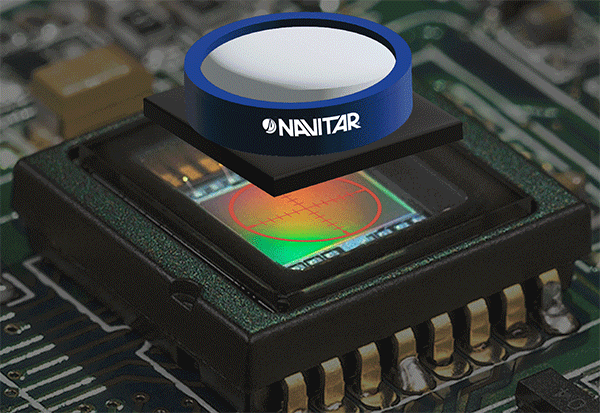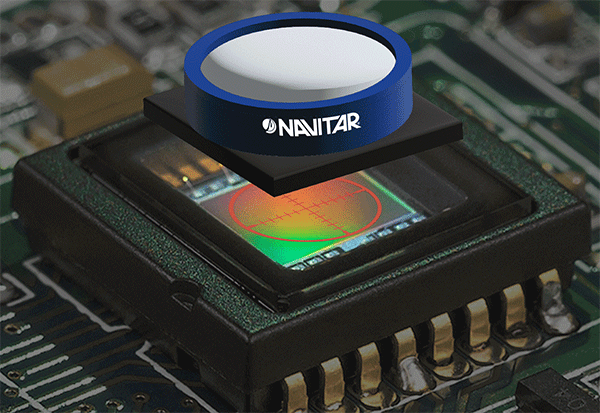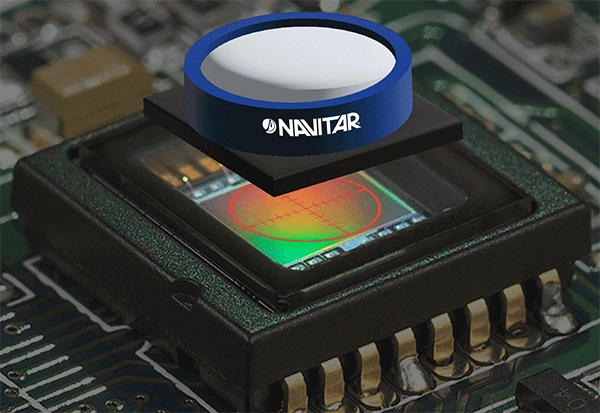Active Alignment of Lens to Sensor Critical for Compact Systems
Actively Aligning a lens to a sensor will provide superior performance and greater consistency, compared to those that are passively aligned.
Passive Alignment
Many camera systems rely on passive alignment, where the fit of each component will determine how well they align. Sensors are placed on carrier boards utilizing a robotic pick and place process. A lens mount is mounted to the carrier board or the carrier board is installed in an enclosure containing a lens mount. While this can be done with great precision, there is no way to compensate for the dimensional variations of the carrier board, sensor or lens mount. Shifting can also occur when the sensor is soldered to the carrier board. If the components don't fit perfectly as they were engineered, the change in position, however slight will result in misalignment.
Focal Length
The focal length or back focus of a lens, is the distance between the lens and sensor when the focal plane of the lens and the sensor plane are the same. If a lens has a longer focal length, slight variations may not be detrimental to the system's function.
SLR cameras, machine vision cameras and cell phone cameras utilize different focal lengths based on their varying size and the available space for components. An SLR cameras can have a focal length between 18mm - 200mm or more. More compact machine vision cameras may have a focal length of 10mm - 20mm. Very small cameras like a cell phone camera will have a focal length of 3mm - 4mm. Focal length often correlates with camera size.
Component Tolerances
The lens mount is a key component that will impact alignment. Lens mounts are CNC machined with tolerances of +/- .005". (0.127mm or 127microns), roughly the width of a human hair. As the focal length decreases that variation would be proportionately greater.
If we show this tolerance as a percentage of the focal length it will increase as the focal length drops. That thickness of a human hair thickness will have greater impact for shorter focal lengths.
|
Focal Length |
Tolerance |
Tolerance % of Focal Length |
|
| SLR Camera |
20mm |
+/- .127mm |
0.6% |
| Machine Vision |
10mm |
+/- .127mm |
1.27% |
| Cell Phone |
3mm |
+/- .127mm |
4.23% |
Active Alignment
Smaller designs are more sensitive to dimensional variations and in these cases Active Alignment becomes a necessary step in the assembly process. Compact, performance critical cameras like optical sights for military devices, cameras for autonomous vehicles or augmented reality systems require active alignment to compensate for those dimensional variations.
Actively aligning the lens and sensor not only compensates for irregularities, it will provide more consistent performance. Adjustments are made using the actual image produced by the sensor with 6 degree of freedom. This real time image analysis makes it possible to adjust these characteristics.
The lens and sensor can be aligned with 6 degrees of freedom:
- Movement along Y-axis (Surge)
- Movement along X-axis (Sway)
- Movement along Z-axis (Heave)
- Tilting on X-axis (Roll)
- Tilting on Y-axis (Pitch)
- Turning on Z-axis (Yaw)

 |
Center Axis Auto Aligned Adjustments on |
 |
Focus Auto Adjusted Y-Axis |
 |
Pitch, Roll & Yaw Tilting on X-axis |
The process can also verify spectral response, relative Illumination, dynamic range, white balance and identify defective pixels.
The station projects images from 9 different points. The computer evaluates the output and automatically makes adjustments with 6 degrees of freedom until the lens is in the optimal position. When the desired position is reached, UV light is applied and the position secured. The active alignment process will result in greater consistency and optimal performance.
If you have a system that needs to be actively aligned or want to learn more about the process read more about Active Alignment.
